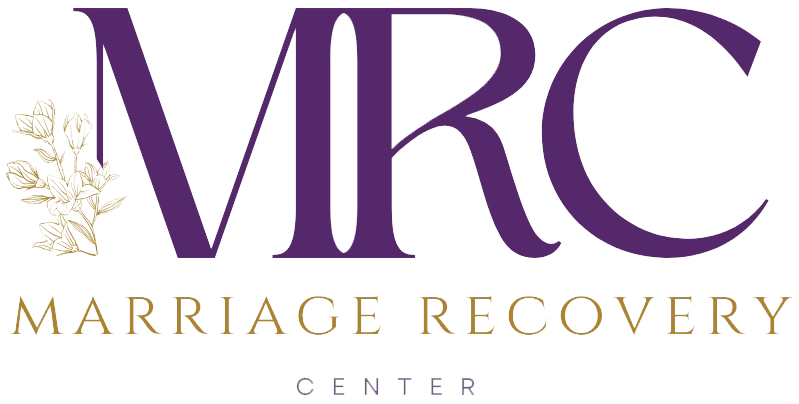Is there only one abuser and one victim in a narcissistic or abusive relationship? Not always! Dr. Hawkins of the Marriage Recovery Center points out that sometimes the lines can become blurred when the victim becomes the abuser, and the abuser becomes a victim of abuse. It’s a common scenario that plays out when a person has been victimized by sustained, ongoing emotional abuse. Learn more about this aspect of Narcissistic Victim Syndrome and how we help couples who find themselves in this situation.
When the Victim Becomes the Abuser
In the realm of domestic abuse, it’s not uncommon for individuals to perceive it as a one-sided scenario where one person is the victim and the other is the perpetrator. However, the dynamics of abusive relationships can be far more complex than meets the eye. In this article, we will delve into a topic that often goes unnoticed: when the victim becomes the abuser. This phenomenon challenges our understanding of abuse and necessitates a more comprehensive approach to healing and recovery.
The Cycle of Abuse
Abusive relationships are often characterized by a cycle of tension-building, an explosive incident, and a period of remorse and reconciliation. Victims often bear the brunt of this cycle, enduring physical, emotional, or psychological abuse. However, there are instances where victims can transform into abusers themselves, and this transformation may be driven by reactive abuse.
Reactive Abuse: A Descent into the Abyss
Reactive abuse is a phenomenon that occurs when the victim, overwhelmed by the continuous abuse and manipulation they have endured, reacts with aggression or abusive behavior toward their abuser. It’s essential to note that this does not justify or excuse the victim’s actions, but it provides insight into the complexities of abuse dynamics.
Emotion regulation plays a significant role in this transformation. Victims may find themselves in a state of emotional turmoil, struggling to manage their feelings of anger, fear, and helplessness. As a result, they may resort to abusive behavior as a misguided attempt to regain a sense of control.
The Need for Comprehensive Treatment
In the quest to address domestic abuse effectively, it’s crucial to consider both sides of the equation. While holding the perpetrator responsible for their actions and helping the victim recover from trauma is vital, it is equally important to recognize that some victims can also perpetrate abuse. This necessitates a broader perspective and more comprehensive treatment strategies.
Challenging Preconceptions
One of the main challenges in addressing abuse is overcoming preconceived notions. Traditionally, society has often portrayed men as the primary perpetrators of abuse and women as the primary victims. While this is undoubtedly the case in many situations, it is not an absolute rule. Women can be emotionally abusive, and men can be victimized.
The core message here is that abuse does not discriminate based on gender. As therapists and as a healing community, it’s our responsibility to confront this issue from a more inclusive standpoint. Recognizing that emotional abuse can manifest in various forms is the first step toward understanding the complexity of abusive relationships.
Supporting Both Partners
When we encounter a case where the victim becomes the abuser, it is essential to support both individuals involved. Placing the man in a perpetrator treatment program and the woman in an abuse recovery program is a step in the right direction, but it may not be enough. We must consider the emotional toll on the victim-turned-abuser and help them find a healing path.
Setting Boundaries and Embracing Healthy Behavior
To foster lasting change, it’s crucial to focus on both partners’ ability to set healthy boundaries and embrace positive behavior. In many cases, abusive relationships are the result of two individuals struggling to manage their emotions and communicate effectively. Thus, addressing the emotional well-being of both individuals is essential.
Healthy relationships require two healthy people. Instead of counseling them to part ways immediately, it’s worth exploring the possibility of them healing together. This might involve joint therapy sessions, where both partners learn to navigate their emotions, communicate effectively, and establish boundaries that promote a safe and nurturing environment.
Responsibility and Compassion
While we hold the perpetrator responsible for their actions, we must also approach the victim with compassion and understanding. They, too, have endured trauma and abuse, which may have driven them to react in an abusive manner. Recognizing this can pave the way for more effective healing and recovery.
Conclusion
In addressing the complex issue of abuse within relationships, we must acknowledge that the victim can become the abuser, often as a reaction to prolonged abuse and emotional turmoil. This phenomenon challenges our conventional understanding of abuse dynamics. To truly address the root causes of abuse and promote healing, it is essential to adopt a more comprehensive and compassionate approach that supports both parties involved. By helping individuals set boundaries, embrace healthy behavior, and take responsibility for their actions, we can work toward breaking the cycle of abuse and fostering healthier, happier relationships for all.
To learn how we can help, reach out to us at (206) 219-0145 or info@marriagerecoverycenter.com to speak with a Client Care Specialist
Also read: How to help your Kids Cope with Separation
About Dr. Hawkins:
The internet is inundated with hyperbole and misinformation about narcissism, leaving many people confused and hopeless. Get the facts on narcissism and emotional abuse from someone who has been researching, writing about and treating narcissism and emotional abuse for over a decade.
Dr. Hawkins is a best-selling author and clinical psychologist with over three decades of experience helping people break unhealthy patterns and build healthier relationships
He is the founder and director of the Marriage Recovery Center and the Emotional Abuse Institute which offers education, training and counseling for people who want to break free of, and heal from, emotional abuse. Whether the perpetrator of the abuse is your spouse, partner, parent, boss, friend or family member, we offer practical advice for anyone trapped in a toxic, destructive relationship.
In addition to narcissism & emotional abuse, you’ll learn about the lesser known forms of abuse, including covert abuse, reactive abuse, spiritual abuse, secondary abuse, relationship trauma and much more.







